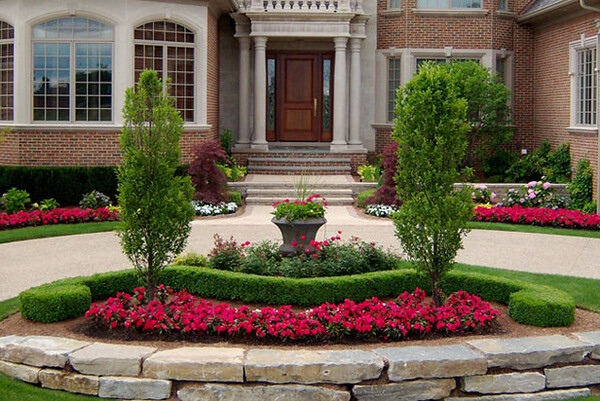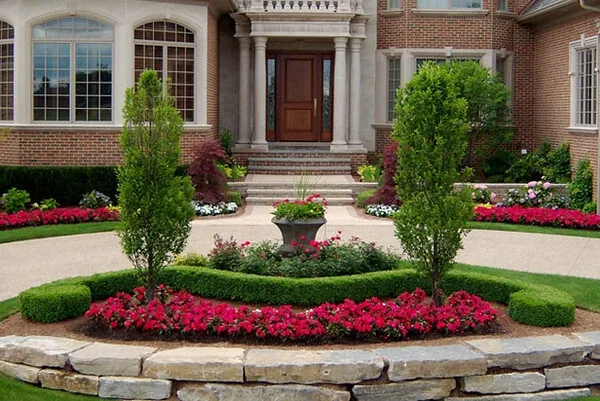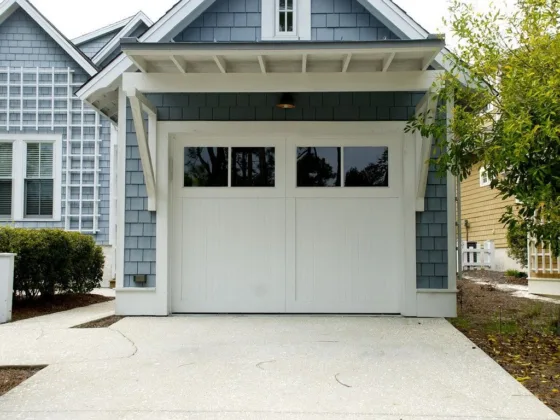Landscape designers and architects employ principles and techniques to create appealing, functional exterior living areas.
Although several property owners and DIY enthusiasts lack significant technical qualifications, the fundamentals of the experts aren’t entirely unattainable.

You can obtain excellent landscape designs from eos Outdoor Services for a more professional touch that incorporates design principles. Experts employ core compositional concepts when planning various types of outdoor spaces.
These creative and practical ideas can benefit residences, gardens, golf courses, companies, and numerous other entities.
Elements of Landscape Design
The instruments that designers or architects utilize in assembling the different gardening components are landscape design elements.
Design considerations influence the choice and positioning of plants, surface detailing, hardscaping arrangement, water feature kinds, and dimensions.
- Form
- Visible weight and mass
- Line
- Color
- Texture
Principles of Landscape Design
Landscape design principles specify how landscape designers and architects use various design aspects. They classify the concepts of aesthetics and utility into four groups or criteria.
- Repetition
- Order
- Proportion
- Unity
Proportion
The size connection of flora, hardscaping, structures, and other landscape items and the human scale is the proportion in landscaping.
For instance, small flowers at the entrances of a large home get obscured, and a big oak tree can entirely cover the structure. Incorporate a giant foundation plant and trim the oak for greater proportionality.
The aim is to pause and look at how the individual pieces fit together and function harmoniously.
Aspect Ratio
Divine proportionality and aspect ratio are essential in design architecture and have been for the longest. According to this rule, the proportionality of shorter sides to longer sides ought to be similar to the longer side to the aggregate of both ends.
Significant Enclosure
According to the substantial enclosure criteria, the lateral edge of hedges or ornamental fences should cover a minimum of a third of the width of its horizontal area. Such a spatial layout can be appealing to people.
Utilizing the proper proportions also aids in the definition of landscape enclosures, for example, kid’s playrooms and pool decks. You can use them to design flat areas like vertical components or lawns like entrances.
Read Also:
Order
In landscape design, the concept of order incorporates balancing and organizing. The 3D order of the environment encompasses the terrain, plants, buildings, spatial organization.
Even “visual weight” is a good analog for balancing. The objective is to achieve equilibrium from the front to the rear and sideways.
Regulating Lines
Designers draw inspiration from existing materials like the wall lining, specific windows, or dripline giant trees when linking and arranging the layout.
These fictitious borders inspire designers to include features that either unite the area or split it appealingly.
Asymmetrical and Symmetrical Balance
As with classic formal landscapes, symmetry integrates similar plants and the hardscapes as mirror reflections of each other.
Conversely, asymmetry blends diverse elements and functionality whose shapes, colors, and textures have identical visual elements in informal settings.
Repetition
Diverse elements can be intriguing. However, several species, textures, color shades, or blends within a limited space can be disorienting.
In an environment, the recurrence of recognizable cycles and patterns creates a sense of order and coherence. Simultaneously, when you misuse particular aspects, it can get tedious. The trick is to maintain a sense of equilibrium.
Subtle Repetition
When building patterns, repetition shouldn’t necessarily entail employing similar identical items time after time. When circumstances fluctuate, using shape, color, or texture repeatedly across an area can be an excellent approach to implement this idea.
Gradation
You can have a more appealing repetition using a gradual shift in the attributes of a concept. Blooming colors can darken or lighten with time. Also, shapes can get smaller or bigger over time.
Unity
Well-coordinated landscape design creates the impression that all elements function harmoniously to form wholeness. Implementing a tried-and-true design aesthetic or layout, such as Xeriscape style, Samurai, or Formal Garden, can be beneficial but unnecessary.
Unity often seeks to achieve harmonization. Thus, you can create it by organizing surfaces, hues, and shapes in a way that effectively utilizes dominance, connectivity, minimalism, and unity of three.
Dominance
Touchstones are prominent characteristics that draw attention to themselves. These elements usually contrast in size, shape, texture, or color with the surrounding environment. They assist in directing the vision throughout the room by referring to specific spots.
Interconnection
Homeowners frequently consider constructing garden chambers or enclosures to conceal a landscape section. On the other hand, an excellent design combines various aspects to tie everything together.
Simplicity
It is easier to prevent landscape disorders by removing non-essential components. Instead of selecting nine distinct plants for the yearly flower garden, choose a single primary color or variety with two highlights or one.










